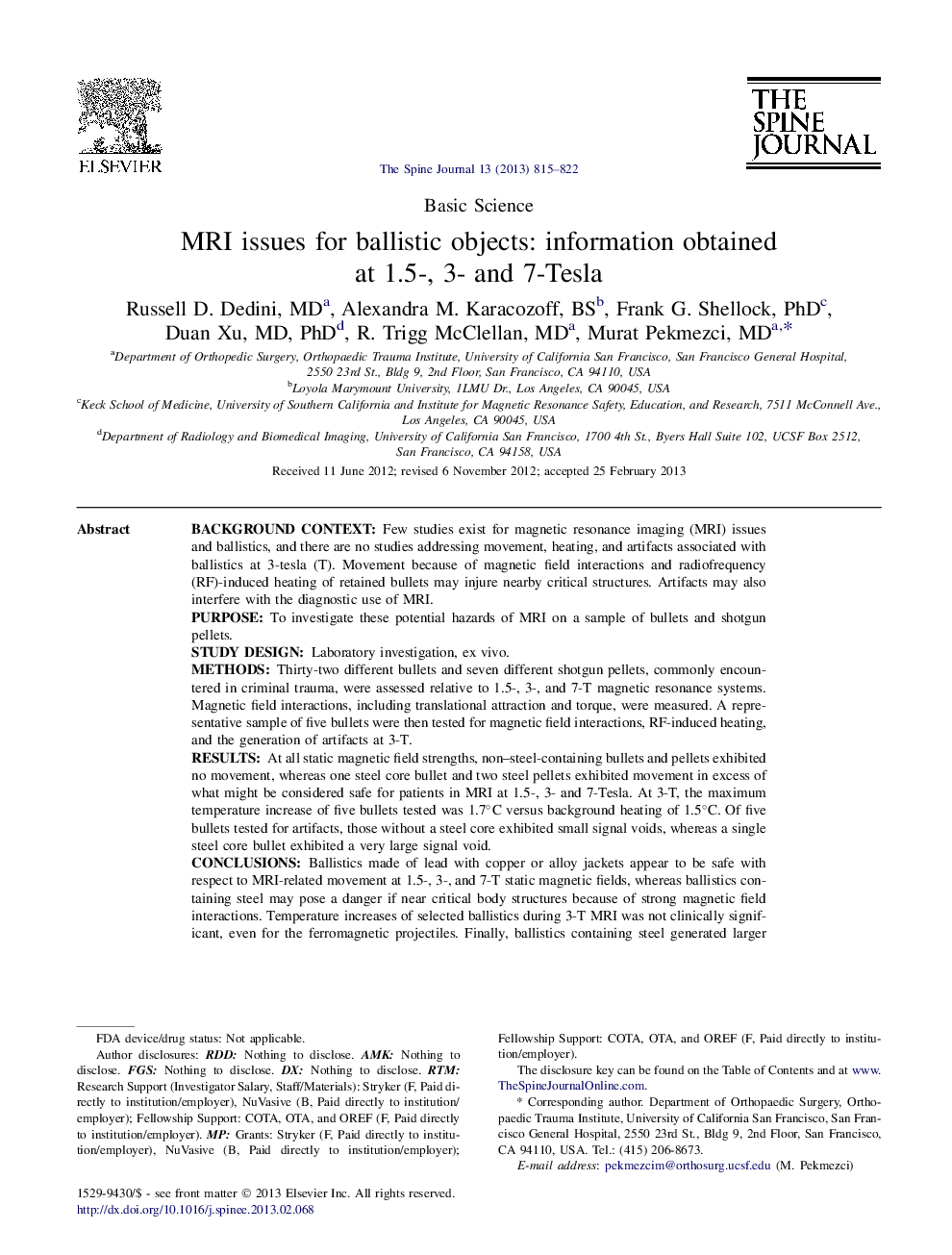| کد مقاله | کد نشریه | سال انتشار | مقاله انگلیسی | نسخه تمام متن |
|---|---|---|---|---|
| 6212558 | 1268581 | 2013 | 8 صفحه PDF | دانلود رایگان |

Background contextFew studies exist for magnetic resonance imaging (MRI) issues and ballistics, and there are no studies addressing movement, heating, and artifacts associated with ballistics at 3-tesla (T). Movement because of magnetic field interactions and radiofrequency (RF)-induced heating of retained bullets may injure nearby critical structures. Artifacts may also interfere with the diagnostic use of MRI.PurposeTo investigate these potential hazards of MRI on a sample of bullets and shotgun pellets.Study designLaboratory investigation, ex vivo.MethodsThirty-two different bullets and seven different shotgun pellets, commonly encountered in criminal trauma, were assessed relative to 1.5-, 3-, and 7-T magnetic resonance systems. Magnetic field interactions, including translational attraction and torque, were measured. A representative sample of five bullets were then tested for magnetic field interactions, RF-induced heating, and the generation of artifacts at 3-T.ResultsAt all static magnetic field strengths, non-steel-containing bullets and pellets exhibited no movement, whereas one steel core bullet and two steel pellets exhibited movement in excess of what might be considered safe for patients in MRI at 1.5-, 3- and 7-Tesla. At 3-T, the maximum temperature increase of five bullets tested was 1.7°C versus background heating of 1.5°C. Of five bullets tested for artifacts, those without a steel core exhibited small signal voids, whereas a single steel core bullet exhibited a very large signal void.ConclusionsBallistics made of lead with copper or alloy jackets appear to be safe with respect to MRI-related movement at 1.5-, 3-, and 7-T static magnetic fields, whereas ballistics containing steel may pose a danger if near critical body structures because of strong magnetic field interactions. Temperature increases of selected ballistics during 3-T MRI was not clinically significant, even for the ferromagnetic projectiles. Finally, ballistics containing steel generated larger artifacts when compared with ballistics made of lead with copper and alloy jackets and may impair the diagnostic use of MRI.
Journal: The Spine Journal - Volume 13, Issue 7, July 2013, Pages 815-822